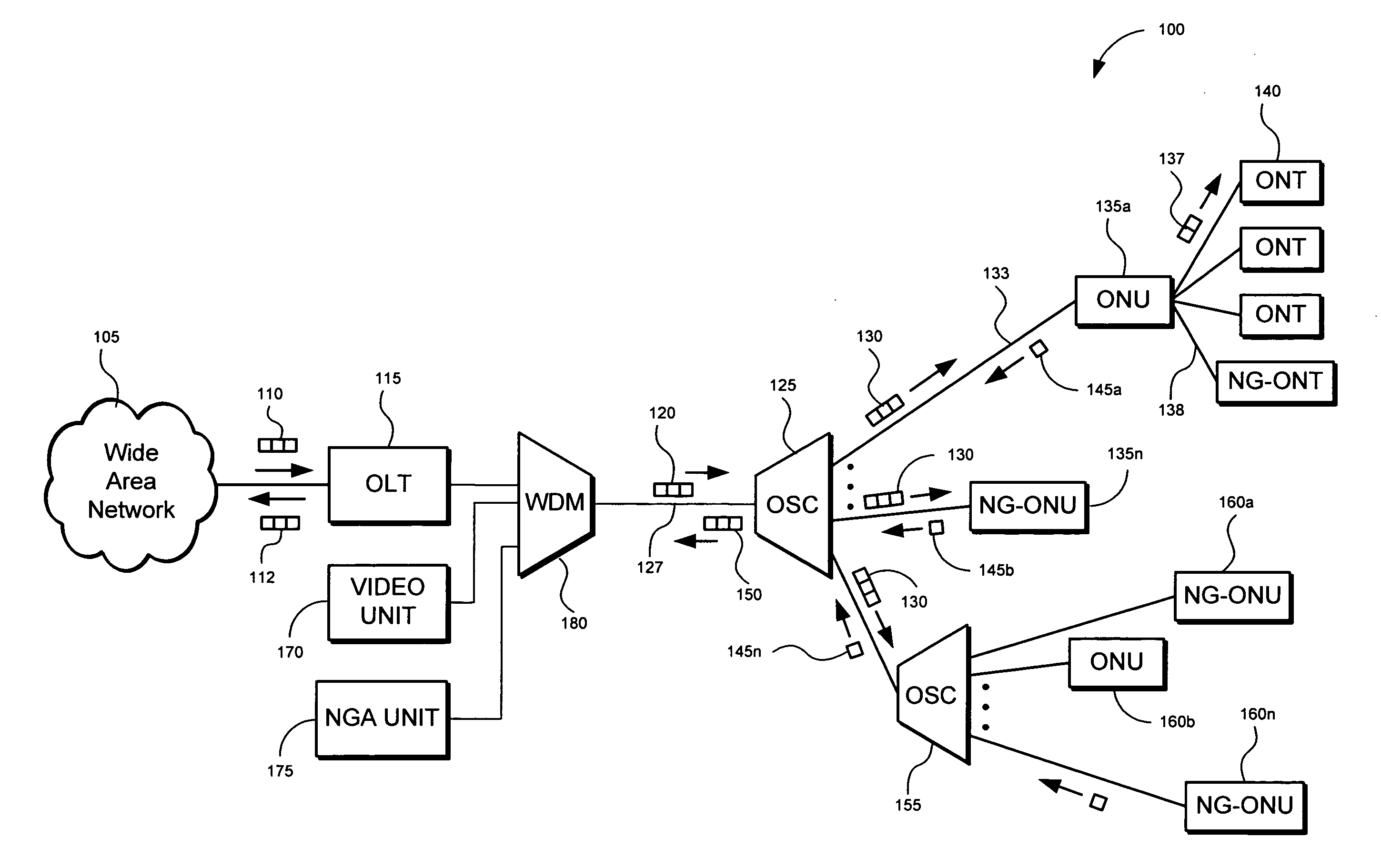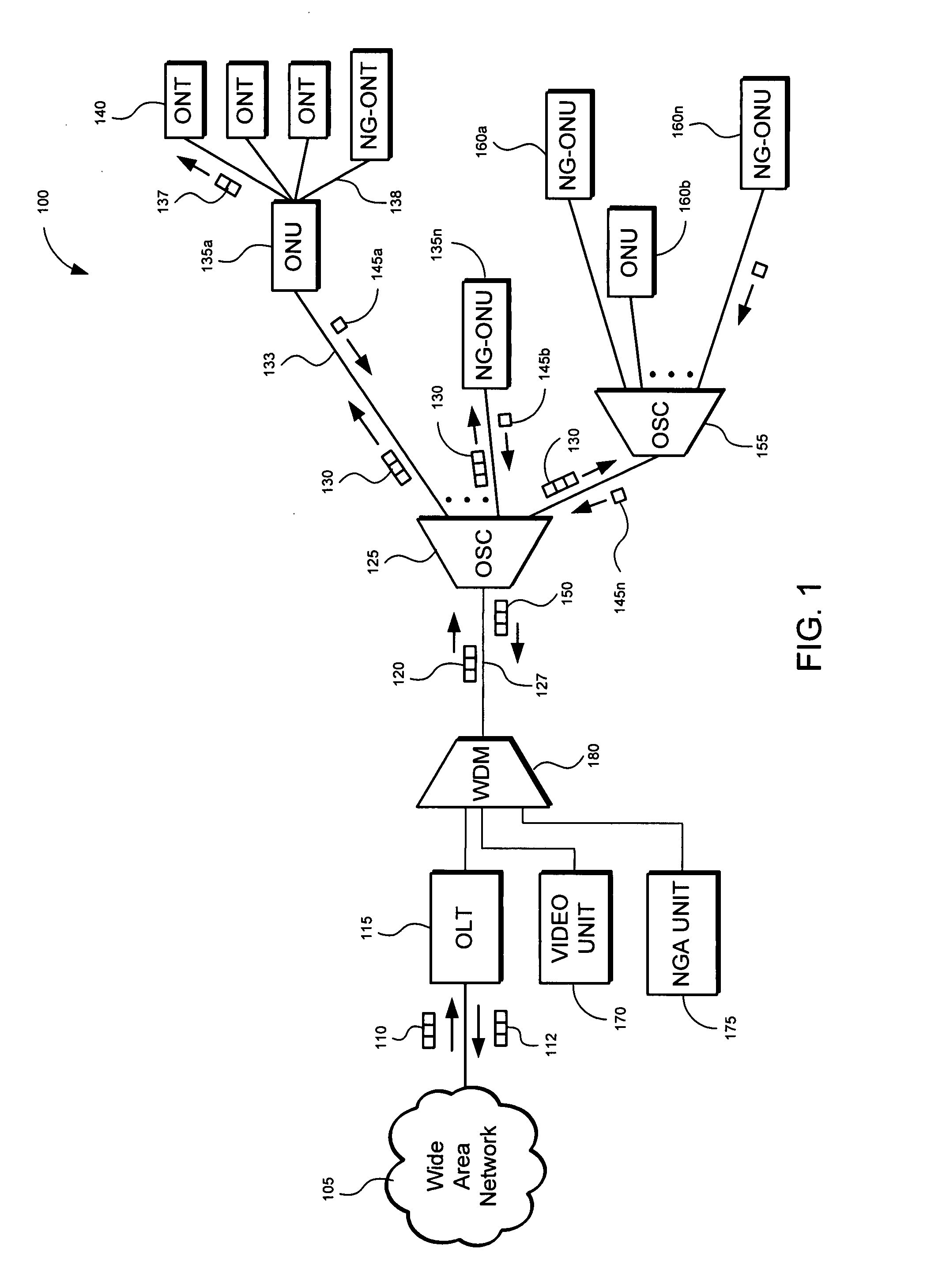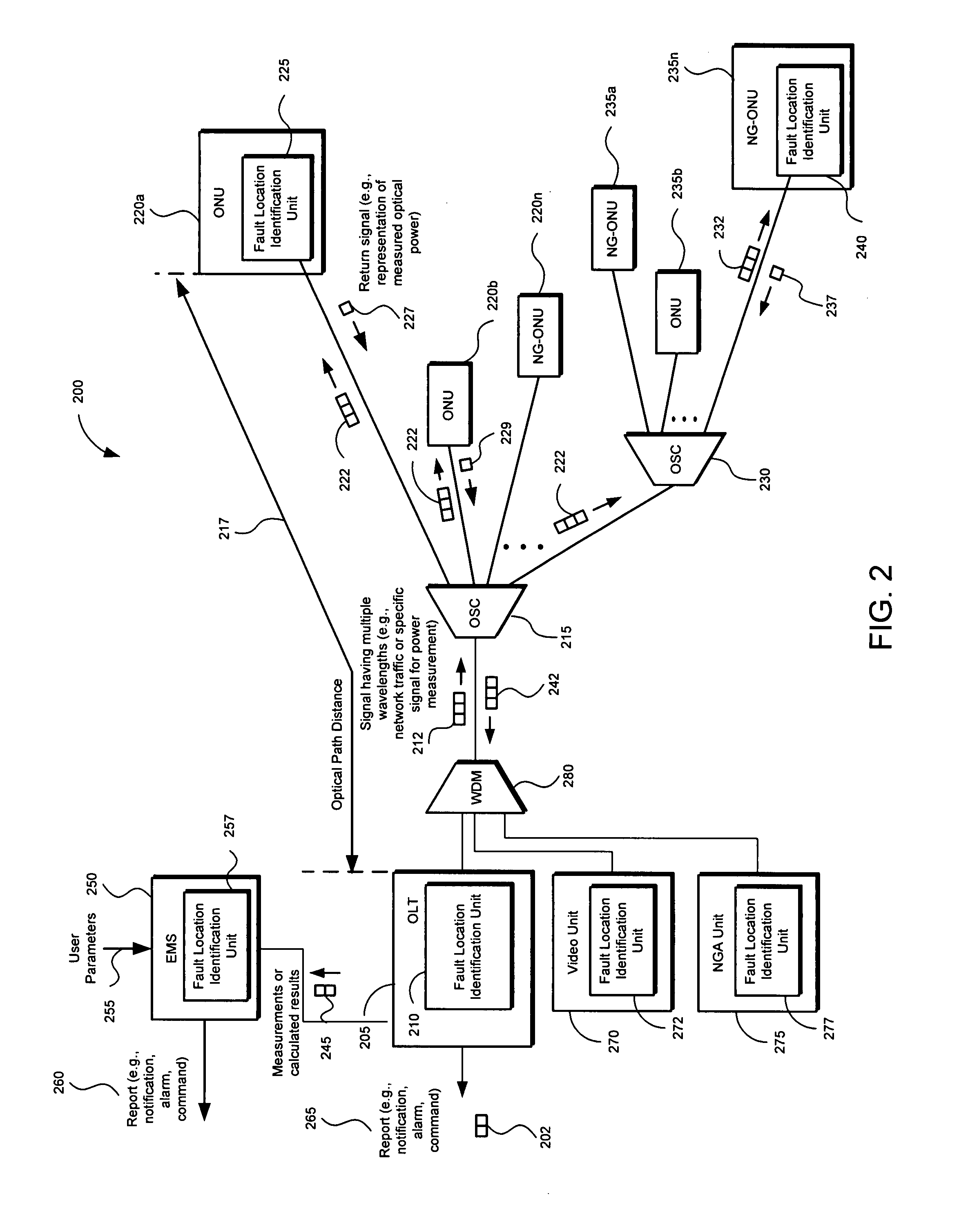Method and apparatus for isolating a location of a fault in a passive optical network
a technology of optical network and fault location, applied in the direction of electrical equipment, transmission monitoring, transmission monitoring/testing/fault measurement system, etc., can solve the problems of increased maintenance and operation costs, limited number of oscs used,
- Summary
- Abstract
- Description
- Claims
- Application Information
AI Technical Summary
Problems solved by technology
Method used
Image
Examples
Embodiment Construction
[0017]A description of example embodiments of the invention follows.
[0018]Early implementations of optical networks were deployed as point-to-point networks. With single end nodes, it is relatively easy to determine operating characteristics of the optical link, such as excess optical signal power loss. Troubleshooting and isolating the location of a fault in point-to-point optical networks is also a relatively straightforward process as there are only two network nodes and one or two communication paths. As service demands have increased, network providers have begun deploying point-to-multipoint passive optical network (PON) architectures.
[0019]The PON architecture allows a service provider to serve multiple users with less equipment and fiber as compared with equivalent point-to-point architectures. Examples include asynchronous transfer mode (ATM) PONs (APON), broadband PONs (BPON), and more recently Ethernet PONs (EPON), as described in the Institute of Electrical and Electroni...
PUM
 Login to View More
Login to View More Abstract
Description
Claims
Application Information
 Login to View More
Login to View More - R&D
- Intellectual Property
- Life Sciences
- Materials
- Tech Scout
- Unparalleled Data Quality
- Higher Quality Content
- 60% Fewer Hallucinations
Browse by: Latest US Patents, China's latest patents, Technical Efficacy Thesaurus, Application Domain, Technology Topic, Popular Technical Reports.
© 2025 PatSnap. All rights reserved.Legal|Privacy policy|Modern Slavery Act Transparency Statement|Sitemap|About US| Contact US: help@patsnap.com



